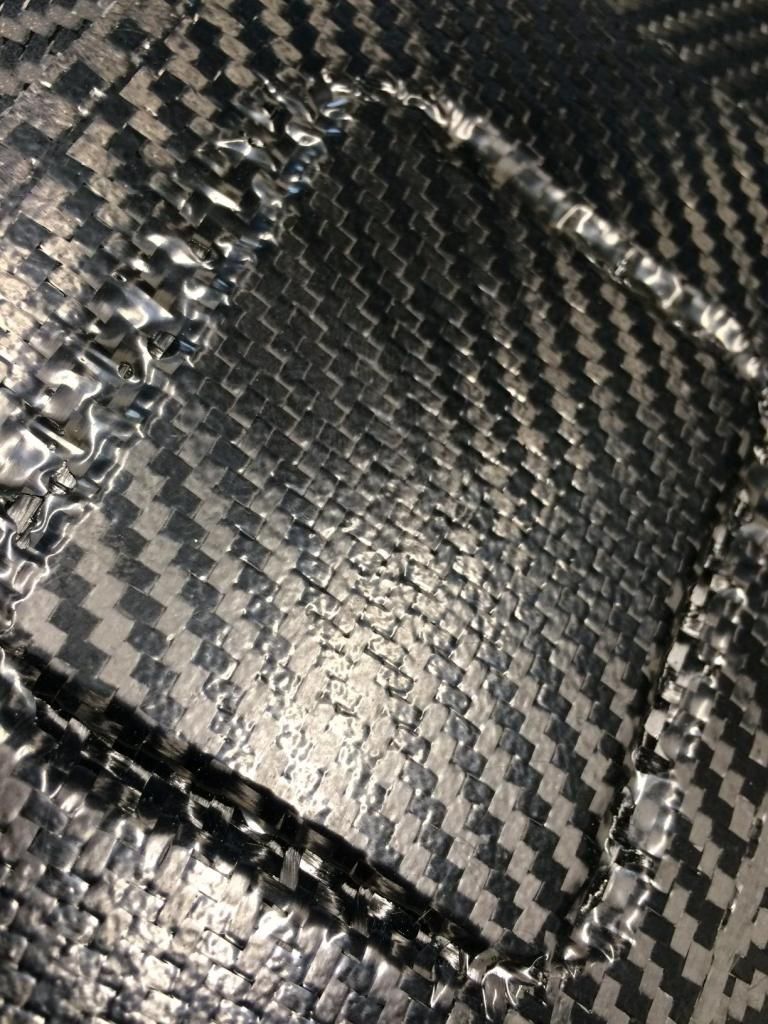I have been doing some experimental lay up and find that I am getting voids in the carbon? One friend suggested that I was creating to much vacuum. I always thought the more vac the better? The gauge on my pump set up reads 25 in Hg when everything is sealed up but I still get the voids? Both examples below were layed up wet on a piece of melamine with peel ply breather and then wrap and gummy tape to seal to the melamine. Ultimate goal is to make some wing uprights for our race car and they need to be void free and smooth on both sides. This just isn’t cutting it.
First shot is two layers of 3k twill with a 3mm piece of “coremat” and a 3k top layer

This is a a piece of 3/8" foam with the same 3k twill, one layer on both sides.

